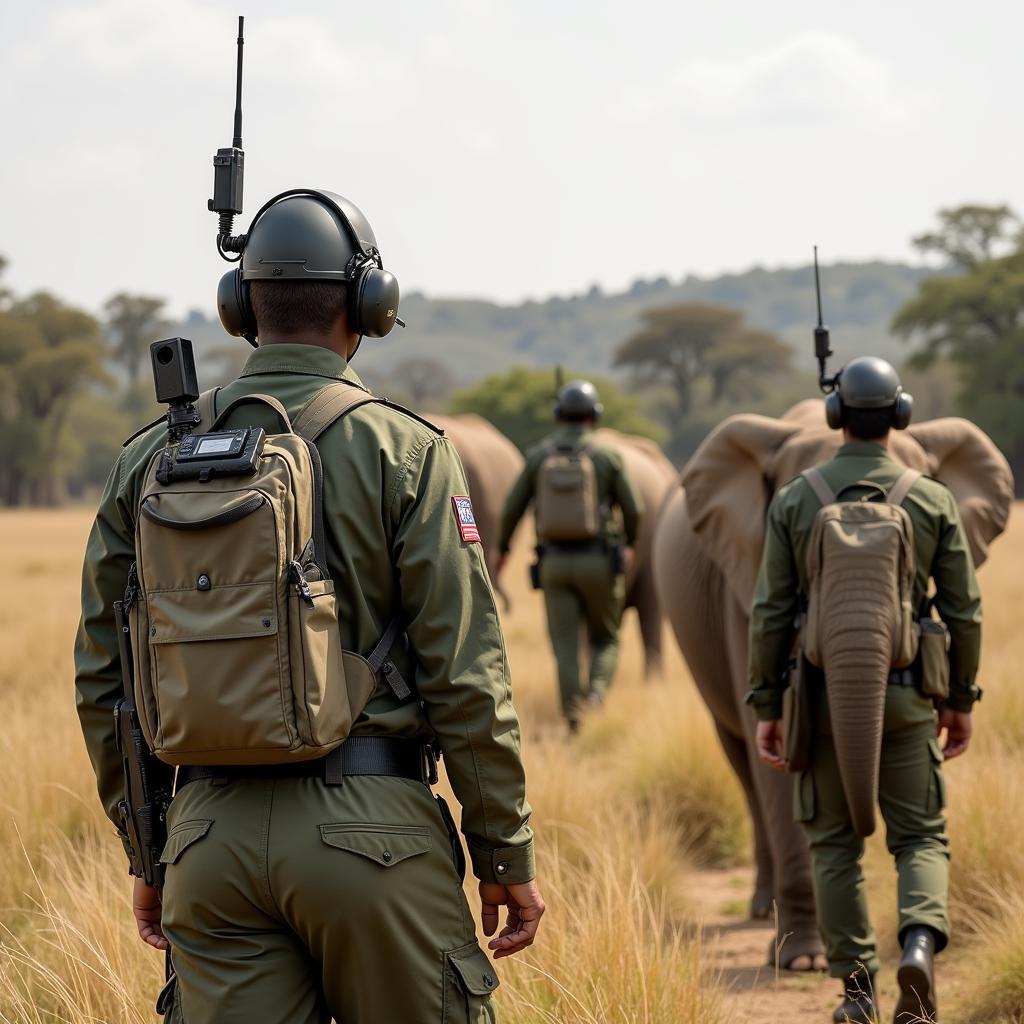African Elephant: How Did It Get Endangered?
The African elephant, a majestic symbol of the African savanna, is facing a critical threat: endangerment. This article delves into the complex factors that have led to the decline of these magnificent creatures and explores what is being done to protect them.
The Plight of the African Elephant: A Story of Decline
The African elephant, both the savanna and forest subspecies, has experienced a dramatic population decline over the past century. Once numbering in the millions, their numbers have dwindled due to a combination of human activities and environmental pressures. Understanding the root causes of this decline is crucial for effective conservation efforts. The sad truth is that without intervention, these gentle giants face a bleak future. We will examine the reasons behind their endangered status, focusing on the devastating impact of poaching, habitat loss, and human-wildlife conflict.
One of the primary drivers of the African elephant’s decline is the illegal ivory trade. For decades, poachers have targeted these animals for their tusks, leading to widespread slaughter and decimating entire populations. The demand for ivory, particularly in Asian markets, fuels this illicit trade, making it a lucrative business for criminal networks.
Another significant threat is the loss and fragmentation of habitat. As human populations grow and expand into elephant territories, the natural spaces where these animals roam and forage become increasingly limited. This encroachment leads to competition for resources and increases the likelihood of human-wildlife conflict.
Furthermore, human-wildlife conflict poses a significant challenge. As elephants lose their natural habitat, they are forced to raid crops and sometimes injure or kill people in their search for food and water. This conflict often results in retaliatory killings of elephants, further exacerbating their decline.
What Led to the African Elephant’s Endangered Status?
The combination of these factors – poaching, habitat loss, and human-wildlife conflict – has created a perfect storm, pushing the African elephant towards endangerment. The consequences of inaction are dire, and the responsibility to protect these magnificent creatures rests on our collective shoulders. But how exactly did this happen? Let’s break down the contributing factors.
Poaching: The Ivory Trade’s Devastating Impact
The illegal ivory trade has had a devastating impact on African elephant populations. The high demand for ivory, particularly in some Asian countries, has fueled a lucrative black market, incentivizing poachers to target these animals for their tusks. This relentless pursuit of ivory has led to the slaughter of countless elephants, decimating their numbers and leaving lasting scars on their populations.
 African Elephant Habitat Loss Due to Deforestation: Shrinking Spaces for Giants
African Elephant Habitat Loss Due to Deforestation: Shrinking Spaces for Giants
Habitat Loss and Fragmentation: A Shrinking World for Elephants
As human populations grow and expand, elephant habitats are increasingly fragmented and destroyed. The conversion of land for agriculture, settlements, and infrastructure development leaves elephants with less space to roam and forage. This habitat loss not only limits their access to vital resources but also increases the likelihood of human-wildlife conflict. Learn more about African habitats and animals.
Human-Wildlife Conflict: A Clash of Needs
The increasing overlap between human and elephant territories inevitably leads to conflict. As elephants lose their natural habitat and struggle to find food and water, they are often forced to raid crops and venture into human settlements, leading to damage and sometimes injury or death. This conflict often results in retaliatory killings of elephants, further contributing to their decline. Check out more African elephant fun facts.
Conservation Efforts: A Glimmer of Hope
Despite the challenges, there are ongoing conservation efforts aimed at protecting the African elephant. These initiatives involve a range of approaches, from anti-poaching patrols and community-based conservation programs to international collaborations and policy changes. While the road ahead is long and arduous, these efforts offer a glimmer of hope for the future of these magnificent creatures.
 African Elephant Conservation Efforts: Anti-Poaching Patrol in Action
African Elephant Conservation Efforts: Anti-Poaching Patrol in Action
Conclusion: Protecting the Giants of Africa
The African elephant’s journey to endangerment is a complex story of human impact and environmental pressures. While the challenges are significant, continued conservation efforts, combined with international cooperation and public awareness, offer hope for their survival. It is crucial that we continue to support these efforts and work together to ensure that future generations can witness the majesty of the African elephant in the wild. Find more information about the mammoth vs African elephant. Thinking about a career in conservation? Explore African Conservation Foundation jobs. And for younger readers, learn more about the African elephant for kids.
FAQ
- What are the main threats to African elephants? Poaching for ivory, habitat loss, and human-wildlife conflict.
- Why is ivory so valuable? It has been historically prized for its beauty and used in various decorative items.
- How does habitat loss affect elephants? It reduces their access to food and water and increases the likelihood of conflict with humans.
- What can be done to help protect African elephants? Supporting conservation organizations, raising awareness, and advocating for stronger anti-poaching measures.
- Are there different types of African elephants? Yes, there are two main subspecies: the savanna elephant and the forest elephant.
- What is being done to combat poaching? Anti-poaching patrols, law enforcement efforts, and international collaborations are being implemented.
- How can I learn more about African elephants and their conservation? Visit reputable conservation organizations and educational resources.
Common Scenarios and Questions:
- Scenario: You encounter an injured elephant. Action: Contact local wildlife authorities immediately. Do not approach the animal.
- Question: What should I do if I witness poaching? Answer: Report it to the authorities immediately. Do not intervene directly.
Further Exploration:
- Learn more about the cultural significance of elephants in Africa.
- Explore the impact of climate change on elephant populations.
Contact Us:
Need assistance or further information about African elephants? Please contact us:
Phone Number: +255768904061
Email: kaka.mag@gmail.com
Address: Mbarali DC Mawindi, Kangaga, Tanzania
We have a 24/7 customer service team ready to assist you.
